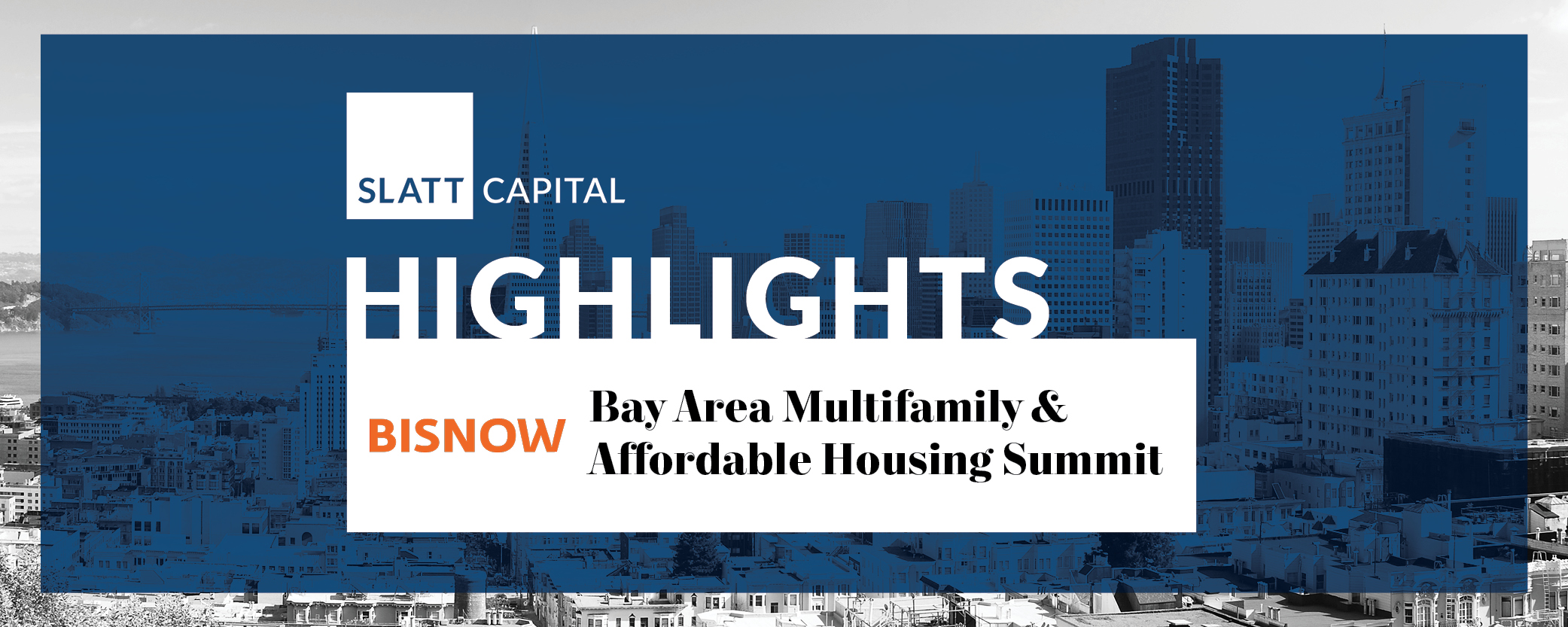
Highlights: BISNOW Bay Area Multifamily & Affordable Housing Summit
Event:
BISNOW Bay Area Multifamily & Affordable Housing Summit
Event Date:
Tuesday, March 7th, 2023
Keynote Conversation:
City and County of San Francisco Chief Economist, Ted Egan
- 35% of service workers moved out of the Bay Area.
- Office vacancy rate is 25%, 2% unemployment rate.
- Tech companies hired more people during the pandemic.
- BART & Muni ridership is at 25-30% of pre-pandemic levels.
- Employees average 2-3 days working from home.
- 80% of SF GDP from office.
- SF/SJ two weakest return-to-office since the pandemic, high housing costs drove them out.
- Multi-family rents are 250% compared to the US average.
- Office adjustment could take ten years to work out.
- The majority of movement of San Francisco has been to other counties within the Bay Area.
Bay Area’s Multifamily Recovery: Investment, Development & Design:
Investment outlook, policies & permitting, creative deal structures & new design trends catching the market’s attention
- Low cap rates, low-interest rates, and rent growth of 2010-2020 are over.
- Interest rate instability halts riskier construction activity—some level of stability is required for riskier projects to resume.
- Construction costs are coming down due to less activity, causing subcontractors to cut their asking prices.
- Smaller projects are suffering due to supply chain issues (12-24 months).
- Entitlements and permits are causing uncertainty, and planners changing from reactive to proactive.
- 100 new housing bills since 2016. ab330 kills affordable housing.
- Affordable projects only work with subsidies -union labor pricing themselves out of the market due to contracts signed several years ago.
- Modular construction and printed buildings are one way to bring down costs.
- Davis-Bacon Act causes union project costs to go up.
Roadmap to Meet the Need for Affordable Housing:
Strategies prioritizing the ever-increasing demand for a better future & what’s in the development pipeline
- SB 35 – sunsets in 2026.
- since 2017, 23,000 units have been applied for under Sb35, 3,400 in SF have been applied for, 2,970 are affordable.
- Need more funding measures for affordable housing.
- Modular units run at 3/4 the cost.
- Short-term project starts to get better pricing from general contractors than longer-term windows.
- SF policies stop market-rate housing which also stops affordable development.
- one state bonus density project has been built in SF since 2017. SF charges fees on bonus units which restricts projects.
- SF needs zoning reform through housing elements, a streamlined approval process, and CEQA reform.
Addressing Evolving Resident Needs:
Tech integration, Amenities, Sustainability, and Innovations
- Electrification of the grid to eliminate incentives for gas saving.
- The cost to heat water electrically is 14x greater than gas.
- Less parking spaces for units in SF.
- Billing back utilities helps to reduce usage -coworking amenities and entertainment amenities for coworking space.
- EV charging needs load sharing to maximize electrical infrastructure.
- Need more electrical generation capabilities.
Simon Yu
Commercial Mortgage Banker
D: 415.872.0903
simon.yu@slatt.com
Niko Tsiplakos
Assistant Vice President
D: 650.443.9041
niko.tsiplakos@slatt.com